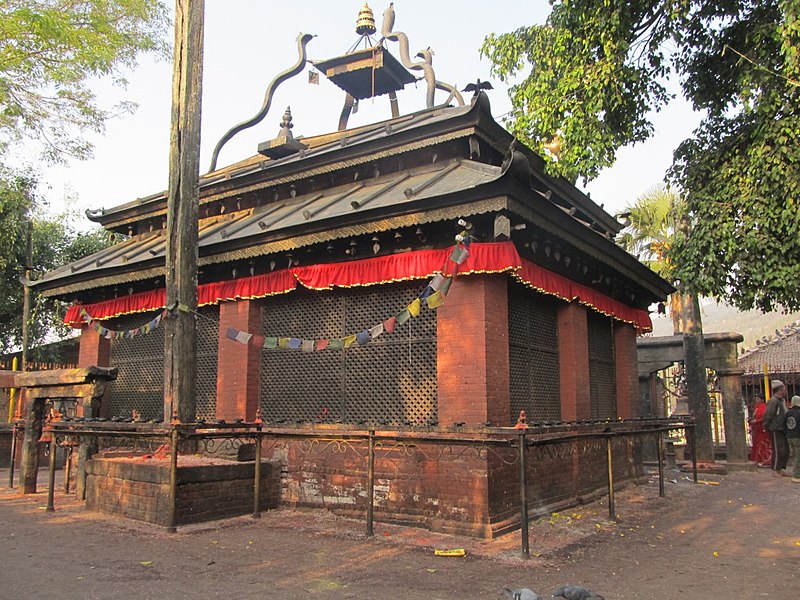Dolakha Bhimsen Temple- Nepal

Address
Dolakha Bhimsen Temple- Bhimeshwor Municipality, Dolakha, Nepal – 45500
Deity
Bhimeshwar
Introduction
- Location:
- The Dolakha Bhimsen Temple is situated in the Bhimeshwar Municipality of Dolakha, Nepal, approximately 4.5 km east of Charikot.
- Temple Structure:
- The temple is unique for being roofless in the center, housing a triangular-shaped stone idol of Bhimsen.
- Deity Representation:
- The idol is believed to resemble three deities: Bhimeshwar in the morning, Mahadeva throughout the day, and Narayana in the evening.
- Worshippers:
- The temple attracts around 5,000 worshippers each week.
- Superstitious Belief:
- It is believed that the temple can signal any bad fortune before it occurs.
Puranic Significance
- Establishment:
- The exact date of the temple’s establishment is unknown, but an inscription dated 1611 AD references its renovation.
- Historical Context:
- The temple is dedicated to Bhimsen, the second brother among the Pandavas from the Hindu epic Mahabharata. It is believed that the Pandavas spent their twelve years of exile in Dolakha.
- Local Legend:
- According to legend, twelve porters constructed a three-stoned stove to cook rice near the temple. When they discovered that only one side of the rice was cooked, they flipped it over. However, the cooked rice turned raw upon contact with the triangular-shaped black stone.
- In anger, one of the porters hit the stone with his ladle, causing it to crack and bleed a milk-like fluid. This event led the porters to realize that the stone was the embodiment of Bhimsen.
- Deity Representation:
- The temple houses a triangular idol made of rough stone, believed to represent Bhimsen, Lord Vishnu, and Lord Shiva at different times of the day.
Special Features
- Perspiration of the Idol:
- The statue of Bhimsen reportedly sweats drops of fluid from time to time, which is considered an omen for the country.
- It is believed that Bhimsen sweats to warn his people of impending misfortunes. Historically, when this occurred, the priest would soak the sweat in cotton and send it to the royal palace. In return, the king would send two goats and a sum of money to avert the misfortune.
- This practice has ceased following significant political changes in Nepal.
- Notable Events:
- The idol is believed to have sweated during pivotal moments, such as:
- The transition from the Rana regime in 2007 BS.
- Just before the 1934 earthquake that resulted in the deaths of 8,500 people.
- The idol is believed to have sweated during pivotal moments, such as:
Festivals
- Major Festival Celebrated:
- Mahashivrathri
Century/Period/Age
1611 AD
Managed By
Archaeological Survey of India (ASI)
Nearest Bus Station
Dolakha
Nearest Railway Station
Khajuri Station
Nearest Airport
Khajuri Station









